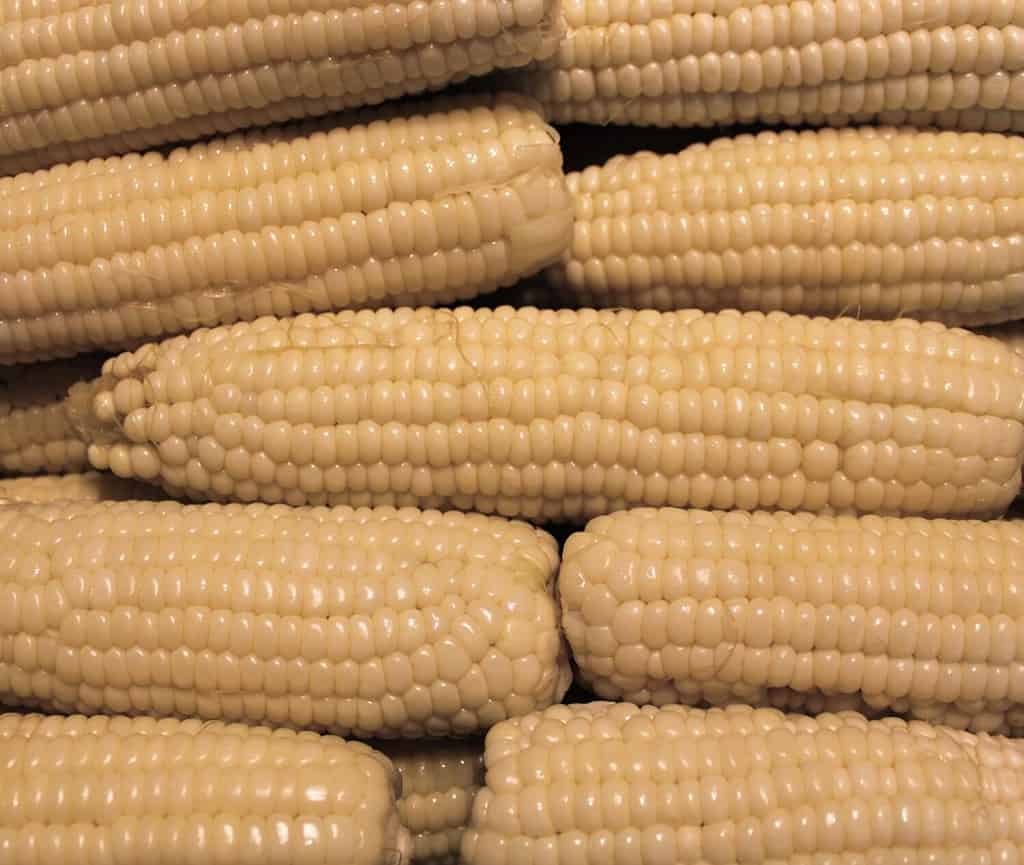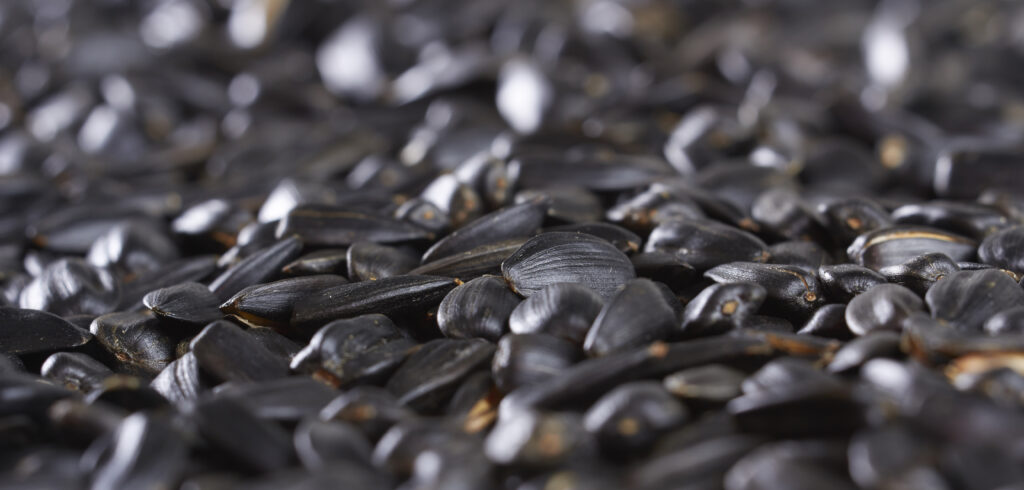Many people who raise chickens or have a homestead are naturally DIY-inclined. They strive to do as much by hand as possible because it means they have better control over the finished result. One of the places you can let your DIY nature shine is by making chicken feed yourself. After all, people did this very thing long before commercial feeds hit the market. But where do you begin? We pulled together the most important information to help you develop your very own blends. It will take some trial and error to land on a mix that your flock loves, but that is part of the fun. So, sit back and discover the 6 best homemade chicken feeds and how to achieve the right nutritional balance.
Benefits of Homemade Chicken Feeds
Purchasing pre-blended chicken feeds certainly has its advantages. It is faster, more convenient, and can be more cost-effective. So, why would you want to make homemade chicken feeds?
When you design the feed, you are in complete control. You know what your flock eats and where each ingredient comes from. Making homemade chicken feeds also offers the flexibility to alter ingredients as needed, which is a bonus when the supply chain is shaky. This process also lets you develop a blend that is closest to a chicken’s natural diet and has the highest nutritional profile possible.

Making homemade chicken feeds also offers the flexibility to alter ingredients as needed, which is a bonus when the supply chain is shaky.
©Manee_Meena/Shutterstock.com
Chicken Feed Requirements
Chickens need the right amount of nutrition at the right growth stage to thrive. Achieving the ideal nutritional balance is particularly critical for hens as they reach the age when they start laying eggs. After all, you want to ensure they produce the most eggs possible with the highest nutritional profile, right? Commercial blends get crafted to meet those needs, so owners don’t even have to think about it. However, if you are making homemade feed, you will need to put a little thought and effort into the blend.
A well-balanced chicken feed needs minerals, fats, vitamins, carbohydrates, and proteins. The greatest portion of any blend should be carbohydrates. Chickens require a high-carbohydrate diet, which they utilize as an energy store for activities like foraging and egg production. Protein is another critically important addition, especially during the developmental stages. This nutrient helps the chicken’s body build a strong body.
You will need to include fat-soluble vitamins in any blend. However, this is vital in colder climates. Fatty acids aid the body in building a good store of body fat, which protects against cold weather. Vitamins and minerals often occur naturally in most ingredients you will include in homemade chicken feeds. Unfortunately, we do live in a time where our food sources have lower nutritional profiles than they did in the past. That means your chicken feed ingredients are probably lacking. So, add a few critical vitamins and minerals to ensure your chickens have exactly what they need.
Building a Balanced Blend
You will need to adjust your blends to suit the specific nutritional needs of meat birds versus laying hens. Starter feeds for all birds require around 22-24% of protein. But their needs for grower feed differ. Hens require around 18% of protein, but meat birds need up to 20%. Researching to discover how much protein each ingredient has will help you build a solid feed blend.
Aim for 80% of your blend to be grain-based. You can choose from corn, wheat, peas, barley, alfalfa, millet, and more. Oats are another popular grain to include in homemade chicken feeds. But they should account for no more than 10-15% of the overall blend. Add-ons and optional ingredients will help balance the overall blend and can be adjusted based on your flock’s unique needs. Some ingredients to consider are salt, grit, oyster shell, fish meal, kelp, sunflower seeds, mineral supplements, buttermilk, and flaxseed.
Try to keep any additional ingredients and supplements to no more than 10% of the total feed blend. Remember, these are strictly in the feeds to add a boost of nutrition. None of the added ingredients offer the high level of protein, carbs, and fats that your flock needs. So, your priority is to build a solid base before selecting your supplements.
So, with those details in mind, here are six homemade chicken feeds to consider making. Adjust proportions to suit the batch size you want to make. Preparing a larger amount at once will save you time and money.
1. Corn Based

Corn-based chicken feeds because they are more cost-effective and super convenient.
©Sarah Macor/Shutterstock.com
Many people opt for corn-based chicken feeds because they are more cost-effective and super convenient. But don’t forget that you will want to add other ingredients to ensure your flock gets a balanced diet. A good mixture is corn, peas, wheat, and barley. Depending on what stage of growth your chickens are in, you may want to add Epsom salt, oyster shells, fish meal, or kelp.
2. Corn Free

Oats are fantastic for your chickens. However, this ingredient is closer to a treat than a need, so keep the amount you add to a minimum.
©Arx0nt/iStock via Getty Images
There may be several reasons you want to provide your flock with a corn-free diet. The good news is that by blending your homemade chicken feeds, you can make that happen. Consider mixing barley, wheat, millet, oats, and split peas. Top this blend off with a mineral blend, flaxseed, kelp, or oyster shells.
3. Wheat Based

There are several varieties of wheat to choose from when building your wheat-based chicken feed.
©zhaojiankang/iStock via Getty Images
You may have easy access to bulk wheat stores, which makes it easy to create a wheat-based homemade chicken feed. Once you select your preferred wheat variety, mix peas, barley, oats, and corn to achieve a more balanced blend. You may also opt for a more significant nutritional punch with optional Epsom salt, buttermilk powder, a probiotic, or oyster shells.
4. Layer Feed

Peas are packed with healthy and easily digestible protein for chickens.
©iStock.com/Linda Hall
Your hens do a lot of heavy lifting (figuratively) throughout their life. They produce the eggs you love, and often at a very high rate. That means they have significant nutritional needs. Building a proper blend for them is critically important to a continuous supply of healthy eggs. Consider mixing corn, peas, wheat, and oats. Then add in crushed oyster shells, kelp, sunflower seeds, or salt.
5. Starter Feed

Sunflower seeds are an excellent source of fat and other key nutrients for growing chicks.
©5,184 × 2,480 pixels, file size: 5.24 MB, MIME type: image/jpeg – Original / License
Chicks are absolutely adorable, which is why so many people find themselves coming home with several after a trip to the hardware store. However, they do require specialized care. One vital component to raising healthy chicks is to ensure their starter feed is packed with protein. So, your homemade chicken feed may require oats, wheat, and peas. Consider adding flaxseed or sunflower seeds for fatty acids and a mineral supplement to round the blend out. Since chicks are still developing, you will want to grind this blend to make it easier for them to eat.
6. Whole Grain Feed

Barely is packed with nutrition and is particularly well-suited for chickens that live in colder climates.
©Thiago Santos/iStock via Getty Images
If you have the means, consider offering your flock a robust whole-grain feed blend. It will likely be less cost-effective than other homemade chicken feeds. However, a whole-grain blend is hearty and packed with nutrition. It is also an ideal feed for colder environments to ensure your flock has what it needs when winter hits. A solid mixture is peas, wheat, barley, millet, and oats. Add in some extra fat by including sunflower seeds or flaxseeds.
Summary of the 6 Best Homemade Chicken Feeds
| Number | Chicken Feed Blend |
|---|---|
| 1 | Corn Based |
| 2 | Corn Free |
| 3 | Wheat Based |
| 4 | Layer Feed |
| 5 | Starter Feed |
| 6 | Whole Grain Feed |
The photo featured at the top of this post is © RB Stocker/iStock via Getty Images
Thank you for reading! Have some feedback for us? Contact the AZ Animals editorial team.







